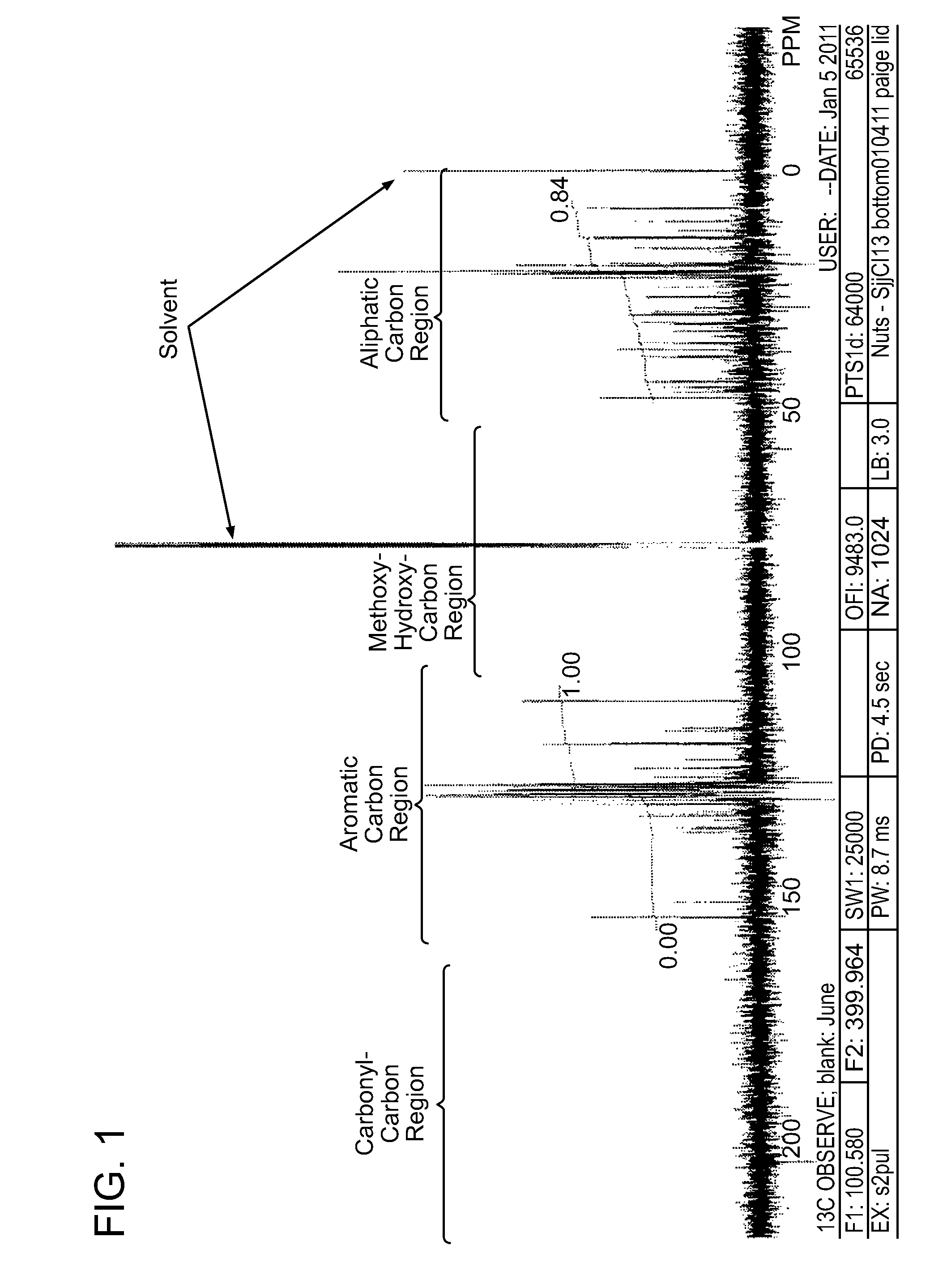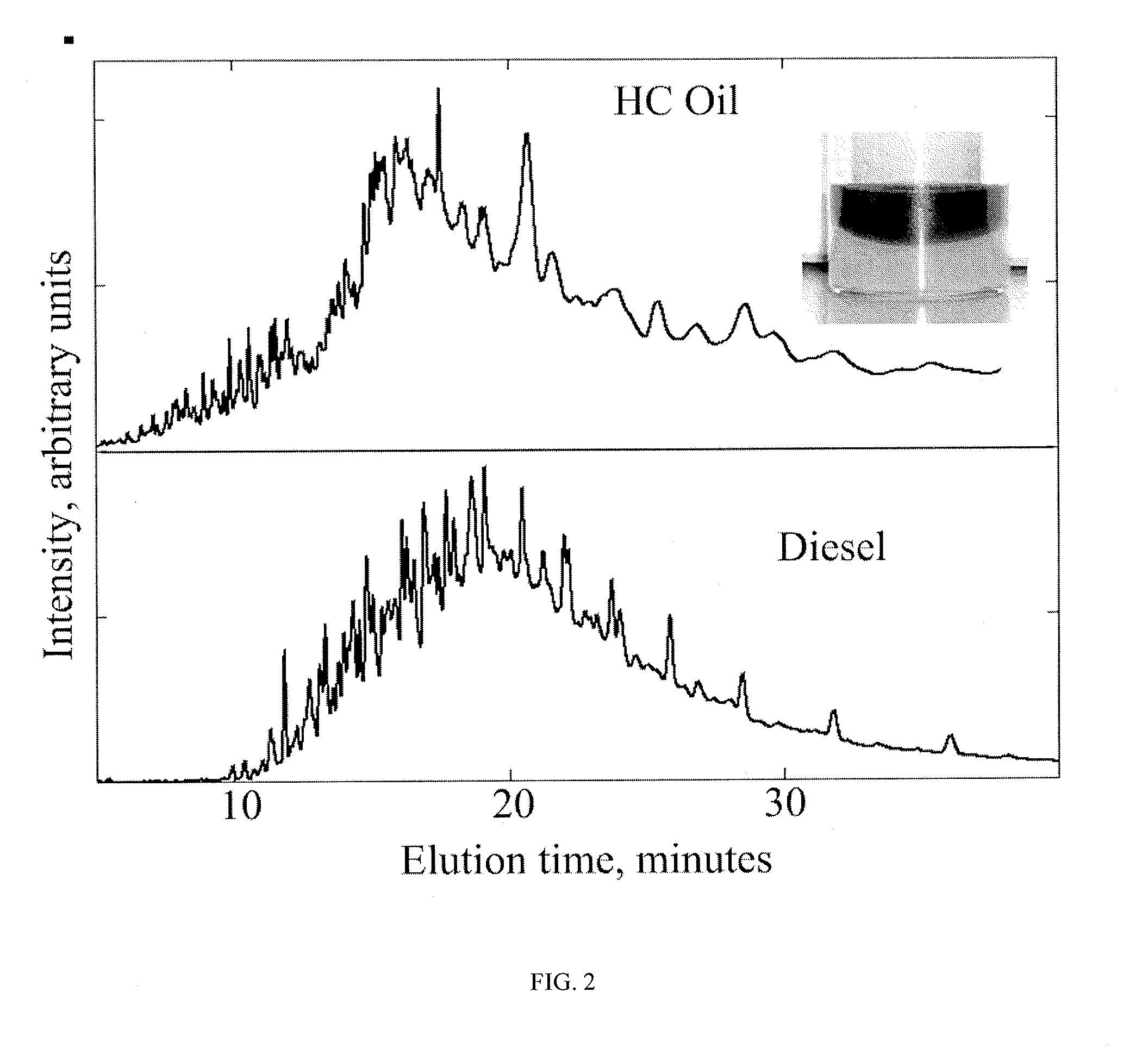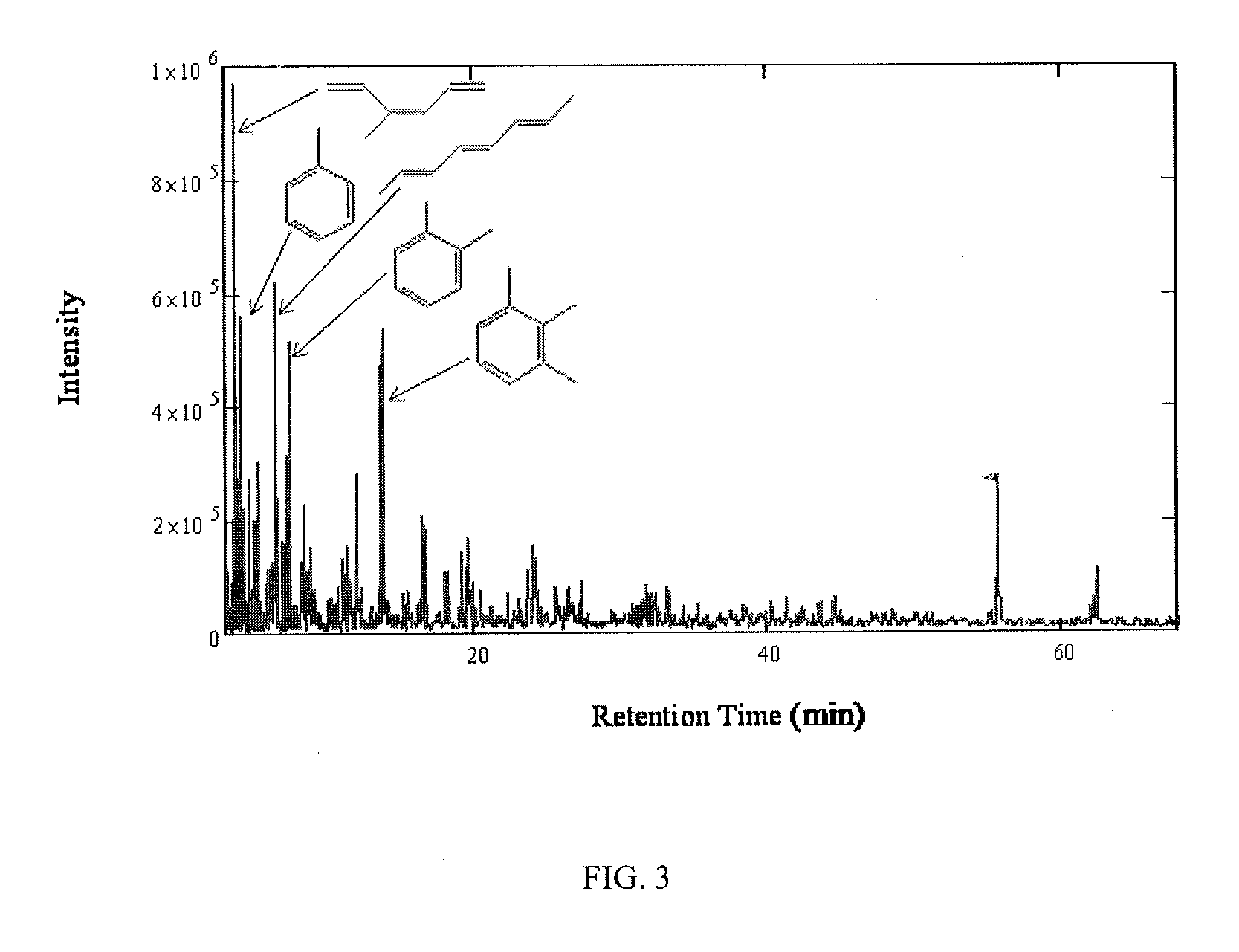Process for improving the energy density of feedstocks using formate salts
a technology of feedstock and energy density, applied in the field of biomass-derived fuels, can solve the problems of allowing the production of low energy density fuels, affecting the performance of vehicles and machinery, and relying on oil as a primary energy source in the world, and achieve the effect of increasing energy density
- Summary
- Abstract
- Description
- Claims
- Application Information
AI Technical Summary
Benefits of technology
Problems solved by technology
Method used
Image
Examples
example 1
Conceptual Example of Process
[0039]A conceptual process flow diagram for converting an organic acid, here levulinic acid, to hydrocarbons is shown in FIG. 4. Levulinic acid is mixed with an application-appropriate quantity of formic acid. The specific amount and concentration of formic acid may be determined by the parameters of the specific application of the invention, including, for example, the yield of hydrocarbon product desired or expected as an outcome of the TDO process.
[0040]In this example, levulinic acid is first neutralized by a stoichiometric quantity of an application-appropriate inorganic cationic compound, here calcium hydroxide (Ca(OH)2). The mixture is then heated, such as in a TDO reactor, to a temperature sufficient to evaporate water from the mixture, for example, to 200° C. The mixture is held at the raised temperature for an application-appropriate period of time, for example, 5 minutes. At this temperature, a significant quantity of any water present in the ...
example 2
Hydrocarbon Production from Mixtures of Formic Acid and Levulinic Acid
[0045]Experiments were conducted to demonstrate the effect of adding formic acid during the thermal deoxygenation of levulinic acid. Reactions were conducted by adding organic acids and an alkaline earth base to a stirred 300 mL semibatch reactor along with stainless steel ball bearings to aid in material mixing. Reagent grade Ca(OH)2 (>98%), levulinic acid (>99%), and formic acid (>95%) were added the reactor, and the liquid mixture was stirred. 20% excess Ca(OH)2 was used for each of the experiments. Nitrogen was continually swept through the reactor at a rate of 100 SCCM, and the products were continuously condensed in a condenser (10° C.), while non-condensable products were collected in bags. Vapors evolved over the course of a 10° C. / min temperature ramp from room temperature to 450° C. The temperature was then maintained constant at 450° C. until no additional product evolution was observed. FIG. 5 shows th...
example 3
Hydrocarbon Production from Mixed Formate and Levulinate Salts
[0048]Experiments were conducted to show that hydrocarbon oil can be produced starting with mixtures of dry salts. Salts were prepared by mixing 550 g Ca(OH)2, 550 g H2O, 703 g levulinic acid, 307 g formic acid. The slurry was dried under ambient conditions, and the dried salt was crushed into particles with sizes up to approximately 5 cm diameter. Approximately 1 kg of dried salt was added to a 3 L, stirred, semibatch reactor in which the temperature was ramped from room temperature to about 500° C. over approximately 3 hours. The reactor was continually purged with nitrogen at a flow rate of 0.5 SLPM, and the products were continuously condensed by a condenser (1° C.) followed by an electrostatic precipitator. The yield of hydrocarbon oil ranged from 0.13 to 0.15 kg oil / kg of salt fed. The hydrocarbon oil properties and composition were similar to those in Example 1.
PUM
| Property | Measurement | Unit |
|---|---|---|
| pressure | aaaaa | aaaaa |
| temperature | aaaaa | aaaaa |
| temperature | aaaaa | aaaaa |
Abstract
Description
Claims
Application Information
 Login to View More
Login to View More - R&D
- Intellectual Property
- Life Sciences
- Materials
- Tech Scout
- Unparalleled Data Quality
- Higher Quality Content
- 60% Fewer Hallucinations
Browse by: Latest US Patents, China's latest patents, Technical Efficacy Thesaurus, Application Domain, Technology Topic, Popular Technical Reports.
© 2025 PatSnap. All rights reserved.Legal|Privacy policy|Modern Slavery Act Transparency Statement|Sitemap|About US| Contact US: help@patsnap.com



